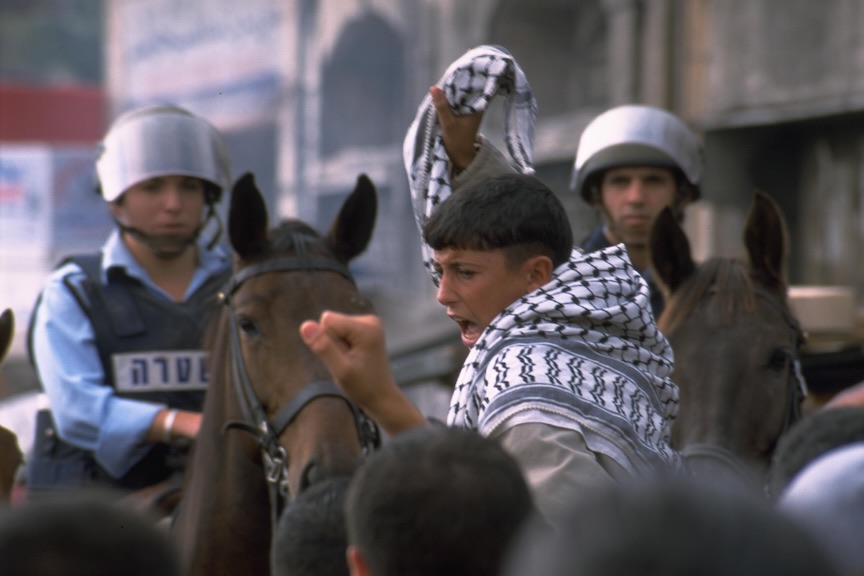1986- INTIFADA BEGINS

In 1986, Palestinian Arabs began what came to be known as the Intifada, their attempt to sow terror and cause Israeli casualties. The Intifada essentially petered out as the world's attention became focused on the Gulf and Iraq's designs on Kuwait.
The First Intifada began on December 8, 1987, in the Gaza Strip, triggered by a car crash that killed four Palestinians. This incident sparked riots that rapidly spread throughout the occupied territories. For two years, Palestinians in the West Bank and Gaza Strip engaged in various forms of protest and civil disobedience. These included mass demonstrations, general strikes, hurling stones and boulders at Israeli forces, burning tires to create roadblocks, boycotting Israeli products and services, refusing to pay taxes, and erecting barricades. The iconic image of Palestinian youths throwing stones at heavily armed Israeli soldiers became a powerful symbol of the uprising.
Initially, Israeli forces were ill-prepared to handle the non-lethal encounters and riots, resulting in a disproportionate number of Palestinian casualties. The Israeli response included mass arrests and detentions, deportations of Palestinian leaders, house demolitions, imposing curfews and movement restrictions, and using live ammunition and rubber bullets against protesters.
In February 1988, Hamas, an offshoot of the Muslim Brotherhood in Egypt, joined the uprising, adding a new dimension to the conflict. Israel's attempts to quell the intifada by targeting PLO leadership and rounding up Hamas leaders proved unsuccessful. The uprising was largely led by local committees and the Unified National Leadership of the Uprising (UNLU). This grassroots leadership coordinated protest activities and represented a challenge to both Israeli authorities and traditional Palestinian political structures.
The intifada had far-reaching effects on both Palestinian and Israeli societies. It gave Palestinians a new sense of empowerment and unity and spawned a serious Israeli protest movement against the continued occupation of territories captured in 1967. For the first time, many Israelis concluded that permanent control over the West Bank and Gaza Strip might not be feasible. The conflict brought international attention to the Israeli-Palestinian issue, led to significant economic disruption in Palestinian territories, and increased security concerns in Israel. The uprising boosted the PLO's local and international standing, leading to diplomatic engagements.
The intifada gradually subsided due to exhaustion and the events leading to the 1991 Gulf War. However, its impact continued to shape the Israeli-Palestinian conflict, contributing to the initiation of the Oslo peace process in 1993.
 >
>